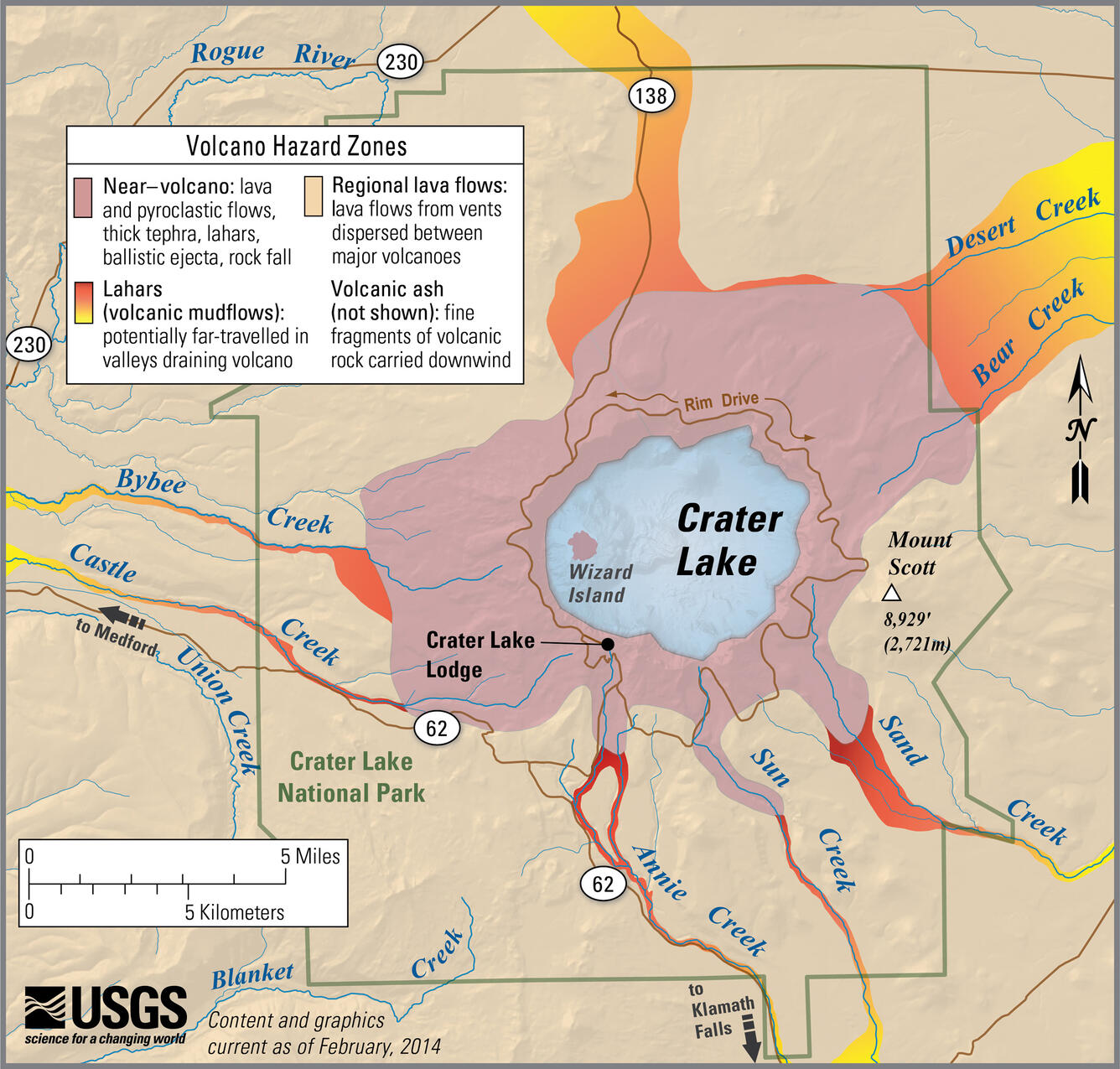Volcanic Hazards for the Crater Lake Region Active
Summary of volcanic hazards for the Crater Lake region.
Crater Lake is unique among other Cascade volcanoes. Because the climactic eruption of Mount Mazama 7,700 years ago made such profound changes to the volcano, the consequences of future eruptions cannot be clearly anticipated by looking at past eruptions of Mount Mazama or any other Cascade volcano. Volcano hazards at Crater Lake fall into two main categories: 1) eruptions within the caldera, reflecting reawakening of the Mazama system, where Crater Lake itself will play an important role in determining the hazardous potential, and 2) eruptions from new vents on the flanks or in the surrounding region. Damaging earthquakes also are possible because a north–south- trending active fault zone traverses the west half of Crater Lake National Park.
When water and magma encounter one another, the likelihood for explosive eruptions rises. Factors that determine how violently water and magma interact include the type of magma, its rate of extrusion, how much gas is in the magma, and the depth of the water in which it erupts. Eruptions that occur in shallow water may be highly explosive while those in the deep lake would be expected to be much less violent.
Summary of volcanic hazards for the Crater Lake region.
Crater Lake is unique among other Cascade volcanoes. Because the climactic eruption of Mount Mazama 7,700 years ago made such profound changes to the volcano, the consequences of future eruptions cannot be clearly anticipated by looking at past eruptions of Mount Mazama or any other Cascade volcano. Volcano hazards at Crater Lake fall into two main categories: 1) eruptions within the caldera, reflecting reawakening of the Mazama system, where Crater Lake itself will play an important role in determining the hazardous potential, and 2) eruptions from new vents on the flanks or in the surrounding region. Damaging earthquakes also are possible because a north–south- trending active fault zone traverses the west half of Crater Lake National Park.
When water and magma encounter one another, the likelihood for explosive eruptions rises. Factors that determine how violently water and magma interact include the type of magma, its rate of extrusion, how much gas is in the magma, and the depth of the water in which it erupts. Eruptions that occur in shallow water may be highly explosive while those in the deep lake would be expected to be much less violent.


